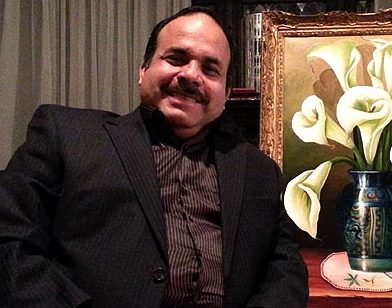Born on 8 June 1973, Jeronimo Lopez received his elementary (1981-1987) and secondary education (1988-1991) in the province of Michoac in (Mexico). Here, he also received his formal training in painting, first at the Escuela Popular de Bellas Artes in the city of Morelia (1991-1995) and subsequently in the studio of Alfredo Zalce (1995). In 1998, he traveled to Guadalajara, where he had the privilege of becoming one of the students of the distinguished artist and professor Jos Luis Garca Miramontes.
From the very beginning of his training period, his instructors noticed the talent of this upcoming artist and encouraged him to leave his natural shyness aside and prepare himself to participate in exhibits, first collective and then individual. Which he did, with much success.
His work, whether describing landscapes and still life realistically or portraits of uninhibited Bodegones idealistically, is strongly influenced by the spirit of his picturesque native region, which he obviously loves and wants to communicate to the public through a very identifiable personal style. His relentless activity, his optimistic perseverance, his constant efforts to improve, as well as his exquisite sensitivity and an acute sense of observation of physical and human nature are sure signs of future recognition.
After Mr. Jeronimo’s recent gratifying exhibits in southern Spain, the noted Spanish poet/art critic Alvaro Morales praised Mr. Jeronimo’s and his works highly, referring in particular to his natural ability to draw faultlessly, a condition sine qua non for a young painter to succeed. He also noticed the fact that the importance that this painter gives to color manifests itself with utmost clarity and purity in each and every one of his works. Says Mr. Morales: This Mexican painter lives his paintings intensely and passionately; his full commitment and concentration make him an omniscient creator whose descriptions come alive and impress through the intelligent and strongly individualistic use color.

